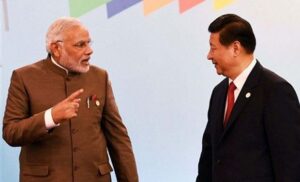India–China Economic Relations: Trade, Deficit, and Future Growth
The relationship between India and China is complex yet essential for Asia’s economic future. Despite political tensions, India–China trade continues to grow year after year. But the biggest concern is that China gains more benefits, mainly because of India’s rising trade deficit. This article explores the current scenario, challenges, and future possibilities in India–China economic relations.
📊 Current State of India–China Trade Relations
India and China recorded bilateral trade worth over $135 billion in 2024, according to Economic Times. However, India imports much more than it exports:
- India exports: raw materials like iron ore, cotton, and agricultural goods.
- India imports: electronics, smartphones, solar panels, machinery, and chemicals from China.
- Result: A massive trade deficit that weakens India’s bargaining power.

As per UN Comtrade Data, China is India’s largest import partner, dominating critical supply chains.
⚖️ Why Does China Benefit More? | India–China Trade Imbalance
China has a competitive edge in almost every sector, making India heavily dependent on Beijing. Some key reasons include:
- China’s strong manufacturing power and low-cost production.
- India’s reliance on Chinese electronics and auto components.
- Higher Chinese investment in technology, innovation, and R&D.
- India still exports low-value raw materials compared to China’s finished products.
For India to reduce this gap, it must push initiatives like Make in India and Atmanirbhar Bharat.
🚀 Steps India is Taking to Reduce Trade Deficit
The Indian government is working on strategies to decrease dependence on China and strengthen its domestic industries. According to LiveMint, India is also diversifying its import sources beyond China.
🔑 Key Measures by India
- Boosting domestic manufacturing under Atmanirbhar Bharat.
- Encouraging global tech firms to set up factories in India.
- Offering incentives for semiconductor and electronics production.
- Strengthening trade with Japan, South Korea, Australia, and ASEAN countries.

For more insights on India’s economic policies, check our related article:
India’s Growth Strategies.
🌍 The Future of India–China Bilateral Relations
The future of India–China bilateral trade will remain a mix of cooperation and competition. Trade volumes are expected to grow, but India’s focus will be on reducing its economic dependency on China. Building a self-reliant manufacturing base, strengthening global alliances, and investing in innovation will decide India’s future success.
✨ Key Takeaways
- India–China trade is growing but highly imbalanced.
- China benefits more due to its strong manufacturing and technology edge.
- India is working on self-reliance and supply chain diversification.
- The next decade will be crucial for India’s economic independence.
Final Thought: India–China economic relations are like a double-edged sword. While trade ensures growth, dependency creates risks. For India, the challenge is to balance opportunity with self-reliance and build a strong economic foundation for the future.

